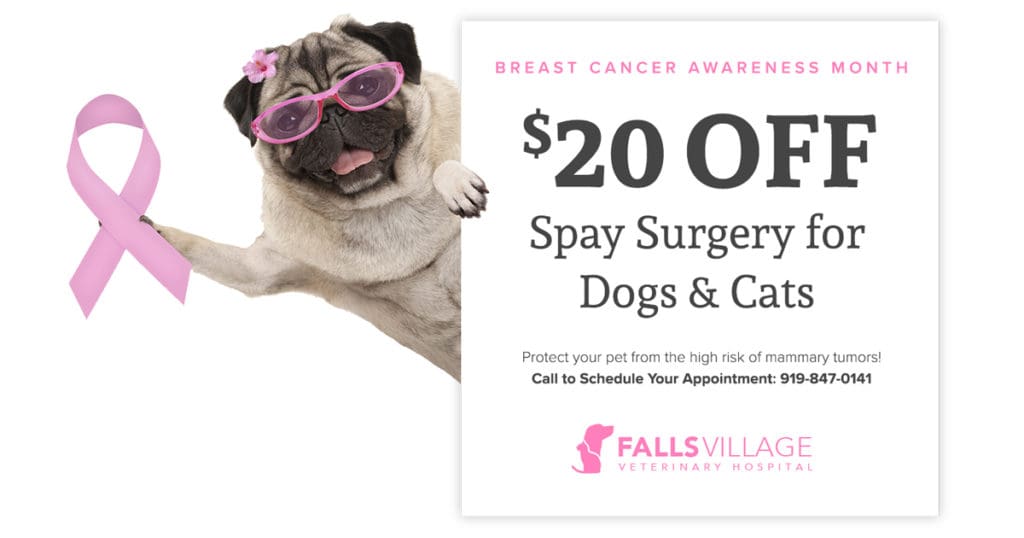 Low cost or “affordable” spay and neuter clinics have really increased in number in the last decade and not without reason. Spaying and neutering cats and dogs reduces the number of unwanted litters, but a lesser-known fact is that it substantially reduces the likelihood of pets developing mammary or testicular tumors, both of which are far more common than you might think. Both spay and neuter clinics and traditional veterinary practices can help with this, and both have some pros and cons. So let’s take a look at them!
Low cost or “affordable” spay and neuter clinics have really increased in number in the last decade and not without reason. Spaying and neutering cats and dogs reduces the number of unwanted litters, but a lesser-known fact is that it substantially reduces the likelihood of pets developing mammary or testicular tumors, both of which are far more common than you might think. Both spay and neuter clinics and traditional veterinary practices can help with this, and both have some pros and cons. So let’s take a look at them!
 These clinics were created to address pet-overpopulation in the U.S. According to the ASPCA, approximately 1.5 million unwanted shelter pets are euthanized each year. Think about how many lives that is. That is how many pets need homes, but no one comes to adopt them. By providing a lower cost spay or neuter service, the goal is to make the surgeries that will help reduce overpopulation more accessible to those who might need assistance.
These clinics were created to address pet-overpopulation in the U.S. According to the ASPCA, approximately 1.5 million unwanted shelter pets are euthanized each year. Think about how many lives that is. That is how many pets need homes, but no one comes to adopt them. By providing a lower cost spay or neuter service, the goal is to make the surgeries that will help reduce overpopulation more accessible to those who might need assistance.
Low cost spay and neuter clinics sometimes offer reduced prices on some vaccines or microchipping, too. This can help increase compliance with rabies vaccine laws along with preventing other highly-contagious diseases that pets can pass to each other, so this is a great perk.
Typically, these are nonprofit organizations, so they receive discounts and donations for supplies as well as volunteer help which can range from administrative work to animal care. This is the only way they are able to operate at a lower cost.
These vets offer the utmost in safety. Surgeries occur in surgical suites where veterinarians are assisted by their chosen team of vet techs and assistants to monitor vital signs, anesthesia, and more. Unlike most low cost clinics, traditional vet practices do require current blood work prior to surgery to check for underlying signs of illness (infection, impaired liver function, kidney health, etc.). This is a policy that exists for the pet’s best interest. Thoroughly evaluating health first is standard, but not all symptoms of illness are visible during an exam alone. Simply put, no human hospital would dare anesthetize a person for a scheduled surgery without a pre-op panel first. Most vets wouldn’t either for the same reasons.
Additionally, recovery in the hours after surgery is very important. Typically, pets in a hospital setting have a dedicated vet tech or vet assistant assigned to assess and document their recovery, vital signs, surgical site, etc. to be sure all is well.
Another consideration is that in a setting where the number of surgeries performed in a day are usually in the single digits, compared to dozens, everything from wellness exams to suturing and recovery monitoring can be done at a different pace. Additionally, the total number of patients per veterinarian with the day can allow time for more individual attention pre- and post-op.
Low cost spay and neuter clinics also have some negatives to consider that are relative to being low cost. In order to keep overhead low and volume up, surgeries and post-operative care need to keep to a tighter schedule the day of surgery and in some cases will need to be booked further in advance. Many clinics also don’t require pre-op blood work to verify the health of major organs and lack of underlying illness; this keeps costs down for the pet owner but could mean missing an underlying health risk.
Additionally, there is usually a higher patient to vet and vet tech/assistant ratio.
For pet owners, the only con is a higher price for the surgery and required services relative to it. A common misconception is that the prices are higher purely for profitability, but this is not true. It really comes down to cost of materials, labor, as well as extra safety precautions, as traditional practices aren’t able to operate off of grants and donations like nonprofit clinics.
And there you have it! While all spaying and neutering of dogs and cats is good, there are some variances to consider when deciding who you want to do it. The most important thing, though, is safely reducing the number of unwanted dogs and cats as well as health problems common in unspayed and unneutered pets, and this is really a team effort to provide quality healthcare and education. We’re proud to be part of it.